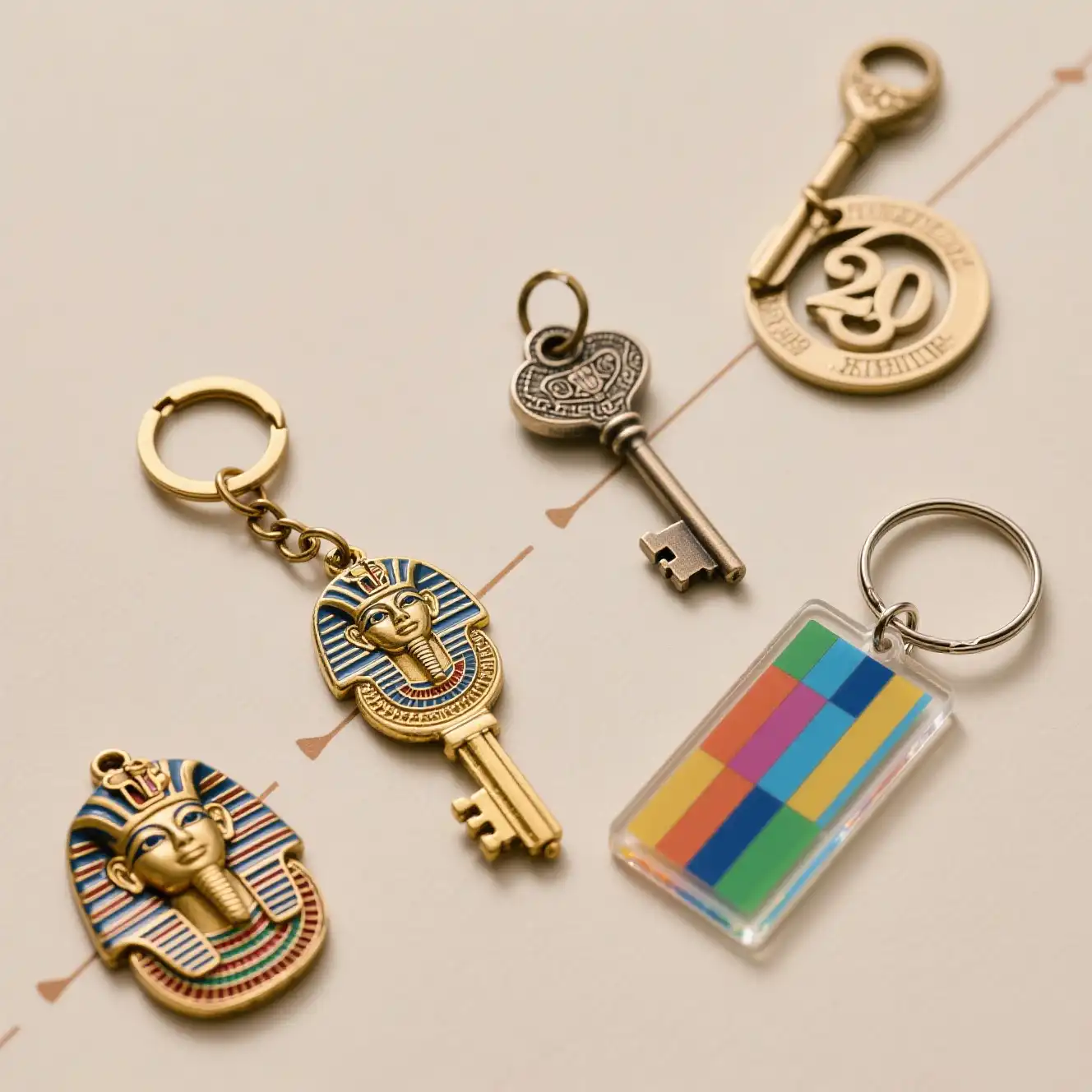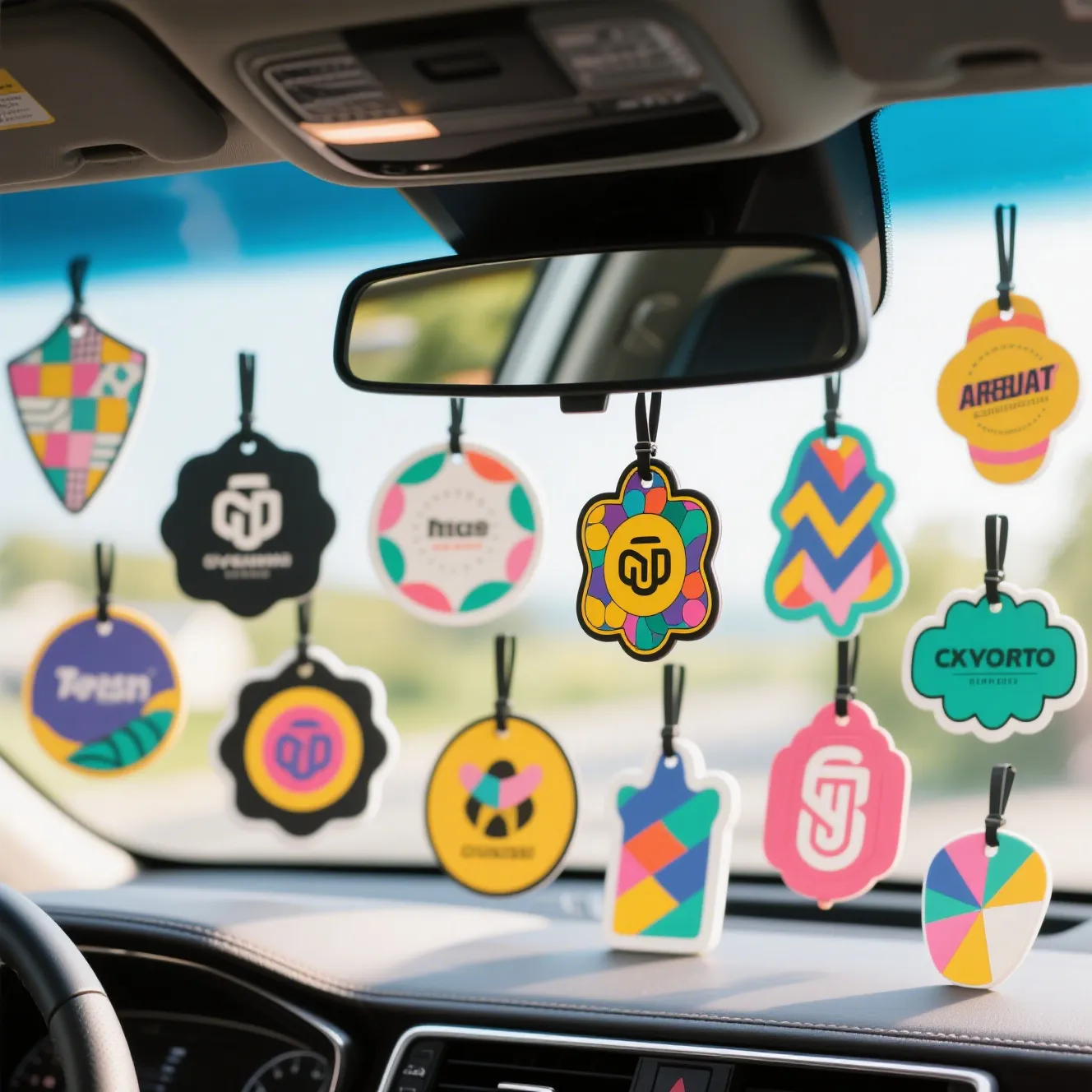The Complete Story from Ancient Origins to Modern Collectibles
The history of keychains is a tale that spans thousands of years, crossing continents and cultures, and blending utility with personal expression. If you’re holding a keychain right now, you’re carrying a piece of history that connects ancient Egypt, Roman nobility, medieval castles, the Industrial Revolution, and the digital age. This article unpacks the full history of keychains—how they began, why they matter, and how you can become part of their story with custom designs from Loongwa Print12.

The Ancient Roots: Keychains in Early Civilizations
The history of keychains begins over 4,000 years ago in ancient Egypt, where the first known keys were created to secure temples and tombs. These keys were large, made of wood or metal, and often attached to rings, cords, or leather straps—primitive keychains that made them easier to carry and less likely to be lost.
In ancient Greece and Rome, keys became more refined and were sometimes worn as jewelry. Wealthy citizens would wear keys on chains around their necks, not only for convenience but also as a mark of status and power. These early keychains were both practical and symbolic.
Keychains as Symbols of Status in the Middle Ages and Renaissance
As society evolved, so did the design and meaning of keychains. During the Middle Ages, keys grew larger and more ornate, often carried on thick chains or belts. Nobles, clergy, and castle keepers wore elaborate keychains made of gold or silver, displaying their authority and control over property. These chains were more than just functional—they were badges of power that continued to be important into the Renaissance, when keychains became even more decorative.
The Industrial Revolution: Keychains for a New Era
The Industrial Revolution in the 18th and 19th centuries marked a turning point in the history of keychains. As factories produced more locks and keys, people needed better ways to organize and carry them. Keychains became smaller, more portable, and were made from materials like brass, leather, and porcelain.
The invention of the split ring by Samuel Harrison in the 19th century was revolutionary. This device securely held multiple keys and small objects together, paving the way for the modern keyring. Alexander Parkes further improved the split ring’s flexibility and durability, making it more practical for everyday use.
In 1894, Frederick J. Loudin patented the first practical keychain fastener—a fork-shaped device that kept keys securely near door locks, improving home security and accessibility. These innovations set the stage for the modern keychain.
The Birth of the Modern Keychain: Early 20th Century
The early 20th century saw the rise of the keychain as we know it today: a small, decorative item attached to a keyring, combining function with personal flair. As more people carried keys for homes, cars, and offices, keychains became a household staple.
Keychains quickly evolved into souvenirs, collectibles, and promotional items. Travelers could buy keychains featuring city names, landmarks, or cultural symbols, turning them into mementos of journeys and experiences. Businesses and car companies began using branded keychains for marketing, a trend that continues today.
Keychains as Cultural Icons: Souvenirs, Collectibles, and Personal Expression
By the mid-20th century, keychains were everywhere. They became:
-
Souvenirs: Reminders of places visited and adventures had.
-
Promotional Tools: Branded with company logos for marketing.
-
Collectibles: From cartoon characters to sports teams, keychains became a way to showcase interests and hobbies.
-
Personal Accessories: With endless designs, keychains became small canvases for self-expression.
In Japan, keychains (often called “charms”) became a pop culture phenomenon, attached to phones, bags, and wallets as symbols of fandom or identity.
The Evolution of Keychain Materials and Design
Keychains have been made from a wide range of materials over the centuries:
-
Ancient Times: Bone, wood, leather, metal, and animal hide.
-
19th–20th Century: Brass, steel, porcelain, Bakelite, and early plastics.
-
Mid-20th Century Onward: Acrylic, PVC, silicone, and advanced polymers.
Acrylic keychains, first appearing in the mid-20th century, became especially popular for their lightweight, vibrant colors, and endless customization options. Advances in production—like laser cutting and 3D printing—have made it easier than ever to create intricate, personalized designs.
Lanyard Keychains: Identity, Association, and Modern Utility
Lanyard keychains, which evolved alongside traditional keyrings, have become important cultural and functional accessories. They’re used for security badges, event passes, and as symbols of group identity—from schools and sports teams to businesses and conventions. Modern lanyards are made from nylon, polyester, and eco-friendly materials, reflecting both technological and cultural trends.
Keychains in the Digital Age: Customization and Creativity
Today, keychains are more than just practical tools—they’re creative, customizable, and deeply personal. Print-on-demand services like Loongwa Print allow anyone to design unique keychains with photos, names, logos, or messages12.
Modern keychains can feature:
-
Acrylic, metal, leather, or wood construction
-
Photo inserts or laser engraving
-
LED lights, bottle openers, or tech gadgets
-
Personalized messages or artwork
-
Collectible series for fans and events
Custom keychains are popular as gifts for birthdays, weddings, graduations, and business promotions.
Why Keychains Endure: Practicality Meets Personality
The enduring appeal of keychains comes from their perfect blend of function and personality:
-
Organization: Keep keys secure and easy to find.
-
Expression: Show off style, interests, or memories.
-
Affordability: Accessible to everyone, making them ideal gifts and collectibles.
-
Innovation: New materials and tech keep keychains fresh and relevant.
From ancient amulets to digital-age custom designs, the history of keychains is a testament to human creativity and the need for both security and self-expression.
How to Create Your Own Custom Keychain
Want to join the next chapter in the history of keychains? Here’s how to design your own at Loongwa Print:
-
Choose Your Material: Acrylic, metal, leather, wood, or eco-friendly options.
-
Pick a Shape and Size: Classic round, novelty shapes, or custom silhouettes.
-
Add Personalization: Upload a photo, add text, or select a unique design.
-
Preview and Order: See your creation before you buy, and enjoy fast, reliable shipping.
Custom keychains are perfect for personal use, gifts, or business branding.
Real Stories: Keychains That Tell a Story
“I started collecting keychains as a child. Each one reminds me of a special trip or a friend. My favorite is a custom photo keychain from my wedding day—it’s a tiny piece of my happiest memory.”
— Jessica, Loongwa Print customer
“Our company gave out branded keychains at our product launch. It was a simple gesture, but people loved them and still use them years later.”
— Alex, Marketing Manager
History of Keychains: FAQ
Q1: What is the origin of keychains?
Keychains originated in ancient Egypt over 4,000 years ago, when large wooden or metal keys were attached to rings or cords for convenience and security.
Q2: Who invented the modern keychain?
The modern keychain evolved in the 19th century, with Samuel Harrison’s split ring and Frederick J. Loudin’s patented keychain fastener being key innovations.
Q3: How did keychains become collectibles?
In the 20th century, keychains became popular souvenirs and promotional items, featuring landmarks, logos, and pop culture icons.
Q4: What materials are used for keychains?
Keychains have been made from bone, wood, leather, metal, plastic, acrylic, and more, with modern designs offering endless customization options.
Q5: Can I design my own keychain?
Absolutely! With print-on-demand services like Loongwa Print, you can create custom keychains with your own images, text, or logos.
Q6: Are keychains still popular today?
Yes! Keychains remain beloved for their practicality, creativity, and ability to express personality or commemorate special moments.
Celebrate the History of Keychains with Your Own Custom Design
The history of keychains is a journey through time, culture, and creativity. From ancient Egypt to the digital age, keychains have evolved from simple tools to cherished collectibles and personal statements. By designing your own at Loongwa Print, you become part of this rich tradition—carrying a piece of history wherever you go12.
Ready to create your own? Visit Loongwa Print and design a keychain that tells your story.
Link
Looking for more personalized gift ideas? Explore custom badges, acrylic stands, and souvenirs at Loongwa Print.


